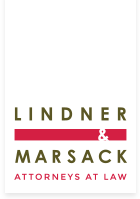In Bexar County Performing Arts Center Fdn. d/b/a Tobin Center for the Performing Arts, 368 NLRB No. 46 (2019), the National Labor Relations Board has limited prior decisions, which allowed the employees of a tenant to engage in union activities on the private property of their employer’s landlord. Whether or not the tenant’s employees normally worked at the location or the general public was invited to that location, the landlord’s property rights could exclude the union activities of the tenant’s workers on the premises if they interfered with the property owner’s business. The only exception would be situations where the union had no “reasonable alternative” communication option to reach its “target [public] audience.”
Since the early 1940’s, employees enjoyed the right to engage in organizational activities on their own employer’s property in non-work areas during their off-duty time. The original cases involved speaking, distributing leaflets, and sometimes picketing in the employer’s parking lots, lunch rooms, or locker rooms. However, these rights did not apply to non-employees such as outside organizers paid by the union. Unless the work location could not be reached without entering private property (for example, an isolated lumber camp), the non-employee was only allowed to deliver the union’s message from the nearest public property, typically, a municipal sidewalk. Lechmere, Inc. v. NLRB, 502 U.S. 527, 537 (1992), quoting NLRB v. Babcock & Wilcox, 351 U.S. 105, 112-113 (1956).
With the advent of shopping centers, office parks, and other complexes where the public was invited to enter private property in order to reach the business site of an employer, courts held that non-employees could leaflet and otherwise campaign on that private property. Shopping centers and similar privately owned gathering places became the new “town square” where all kinds of groups, including unions, could take their message to the public. This was especially the case when other methods of communication (newspapers, radio, etc.) could not reach the targeted workers. In 2011, the NLRB held that a union seeking to organize a restaurant which leased a second floor space at a Las Vegas casino could campaign where the aisle used by the general public intersected with the restaurant’s entry. New York New York Hotel & Casino, 356 NLRB 907 (2011), enf’d. 676 F.3d 193 (D.C. Cir. 2014). The property was owned by a third-party landlord. The theory was that people were invited to use this area like a public sidewalk, so the union could not be banned as some kind of trespasser unless the landlord could prove the activity would prevent its use of the property.
In a three to one decision this month, the NLRB held that the right to organize must be balanced with the property owner’s rights to limit the activities of trespassers. In Bexar County Performing Arts Center, supra,musician-employees of the San Antonio Symphony were prohibited from leafleting the general public on the private walks surrounding the concert hall. The musicians were “contractor employees” of the tenant symphony, not employees of the owner/landlord. They only worked on the premises during rehearsals and performances 22 weeks of their 39 week season. Thus, they did not have the rights of employees of the property owner, but were non-employees who could be barred from the property like the non-employee union-paid organizers in Lechmere and Babcock & Wilcox; supra. The Board said:
“Off-duty employees of a contractor [tenant] are trespassers and are entitled to access for Section 7 [union activity] purposes only if the property owner cannot show that they have one or more reasonable alternative nontrespassory channels of communicating with their target [public] audience.”
The new balance requires consideration of the third-party landlord’s right to limit access (and disruption) by a union or its members if they can use alternative media to present their otherwise lawful message. They are not the landlord’s employees; as non-employees they can be treated as trespassers and excluded from the private property to which the general public has access.
Lindner & Marsack has represented employers in their dealings with unions for over a century. If you have any questions about this case or any other aspect of classic labor-management law, please feel free to contact us at any time.
